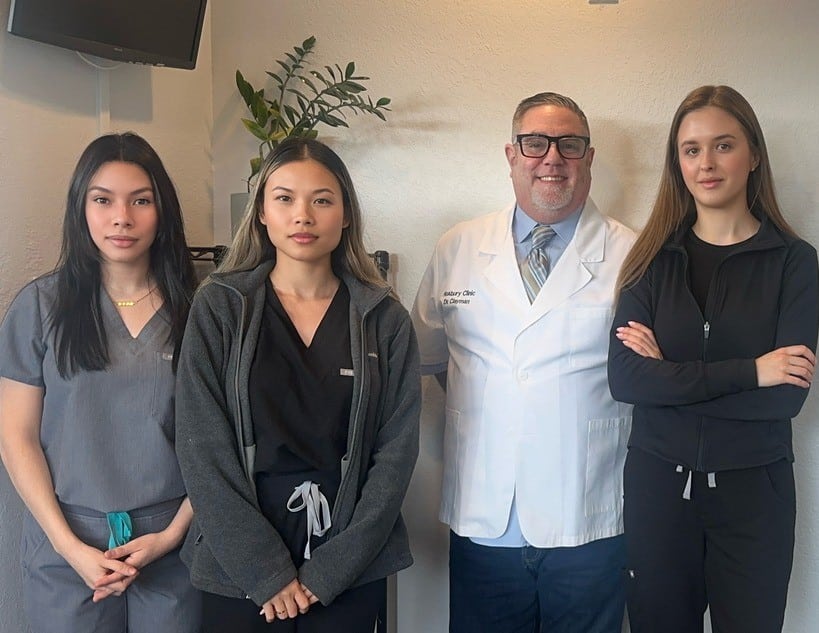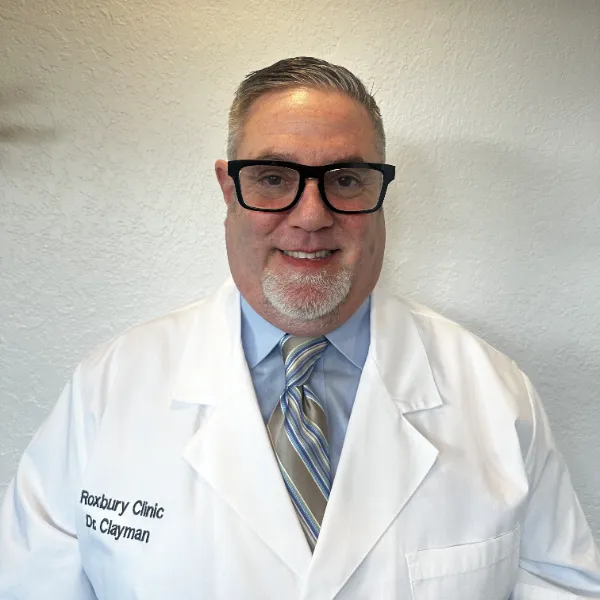
Scoliosis Chiropractor West Seattle
Scoliosis, a condition marked by an abnormal curvature of the spine, can lead to discomfort, limited mobility, and even organ-related complications if left unaddressed. At Roxbury West Seattle Burien Chiropractic Clinic, we offer scoliosis treatment tailored to reduce pain, support healthy spinal function, and improve overall well-being.
Our scoliosis chiropractic approach focuses on non-invasive, personalized care using exercises and spinal therapies that help strengthen muscles, enhance flexibility, and correct misalignment over time. Each treatment plan is created with your condition, lifestyle, and health goals in mind.
Understanding the symptoms, causes, and treatment options for scoliosis is key to managing the condition effectively. Our scoliosis chiropractor team in West Seattle is here to support your journey toward improved spinal health.
What is Scoliosis?
Scoliosis is defined as an abnormal sideways curvature of the spine. While a healthy spine appears straight from the back, scoliosis can create a noticeable “S” or “C” shape that may affect posture and balance.
- Uneven shoulders or hips: This can cause one side of the body to appear higher than the other, often visible in photos or while standing.
- A head that appears too far forward: Often a result of spinal misalignment, it can place additional strain on neck muscles.
- Visible curvature in the spine, especially between the shoulders: This is one of the hallmark signs and may worsen over time without care.
Scoliosis comes in many forms, including adolescent idiopathic scoliosis, congenital scoliosis, and scoliosis acquired later in life due to injury or other conditions.
What Are the Symptoms of Scoliosis?
Scoliosis symptoms vary in severity and can affect different parts of the body:
- Uneven shoulders: One shoulder may appear higher, or clothing may fit unevenly.
- Uneven waist or hips: This can affect gait and lead to discomfort while walking or standing.
- Pain in the neck, back, shoulders, arms, or legs: Pain arises from muscle strain and nerve irritation caused by spinal curvature.
- Headaches and lumbago: Misalignment may put pressure on nerves leading to tension headaches and lower back pain.
- Breathing issues: Severe spinal curves can reduce lung capacity and make breathing more difficult.
- Visceral problems: Advanced scoliosis may place pressure on internal organs, affecting their function.
If left untreated, scoliosis can significantly impact posture, mobility, and overall health.
Types of Scoliosis
There are two primary types of scoliosis:
- Congenital Scoliosis: Caused by spinal malformations present at birth, often requiring early diagnosis.
- Acquired Scoliosis: Develops later in life from neuromuscular conditions, injury, or habitual strain on the spine.
Causes of Scoliosis
Scoliosis has several potential root causes:
- Neuromuscular conditions such as cerebral palsy or muscular dystrophy: These impact muscle tone and spinal stability.
- Birth defects that affect spine formation: Result in abnormal spinal segments or fusion.
- Injuries or infections impacting spinal alignment: Trauma or infection may alter spinal curvature.
- Muscle spasms or physical deformities: Chronic tension or structural irregularities can pull the spine out of alignment.
- Idiopathic scoliosis: In many cases, the exact cause remains unknown.
Long-Term Problems Due to Ignoring Scoliosis
Without proper scoliosis treatment, complications can escalate:
- Chronic pain in the back, neck, and hips: Ongoing misalignment increases strain on muscles and joints.
- Osteoarthritis due to increased stress on spinal joints: Misalignment accelerates joint wear and tear.
- Breathing difficulties caused by compressed lungs: Severe curvature can physically limit lung expansion.
- Reduced mobility and worsening spinal deformities: Without correction, movement becomes more restricted, and spinal curvature may worsen.
Temporary Pain Relief
These short-term strategies may ease scoliosis-related discomfort:
- Stretching and physical exercises: Help maintain flexibility and reduce muscle tension.
- Over-the-counter pain relievers: Offer temporary relief from soreness or inflammation.
- Braces for specific cases: May help stabilize spinal curves, especially in growing adolescents.
Note that these do not resolve the root structural issues and should be paired with professional scoliosis chiropractic care.
Scoliosis Treatment in West Seattle
At Roxbury West Seattle Burien Chiropractic Clinic, we provide personalized scoliosis treatment plans that focus on long-term spinal health. Our methods include:
- Chiropractic Care: Gentle spinal adjustments reduce nerve pressure and help correct spinal misalignment over time.
- Physical Exercise: Strengthens the muscles that support spinal alignment and improves posture.
- Therapies: Includes stretching, rehabilitation exercises, and spinal decompression to relieve pressure and enhance mobility.
- Advanced Treatments: For more advanced cases, we coordinate care with other providers if bracing or surgical options are needed.
Our scoliosis chiropractor team uses a patient-first approach that focuses on non-invasive and functional care.
Does Medical Insurance Cover Scoliosis Treatment?
Most major health insurance providers offer coverage for scoliosis chiropractic care, including physical therapy and related treatments. At Roxbury West Seattle Burien Chiropractic Clinic, we assist patients in verifying benefits and minimizing out-of-pocket costs.
How Roxbury West Seattle Burien Chiropractic Clinic Can Help with Scoliosis
At Roxbury West Seattle Burien Chiropractic Clinic, we’re committed to scoliosis treatment that is both effective and supportive. Our team combines expert care with a compassionate, individualized approach:
- Holistic Approach: We address not only spinal curvature but its impact on your daily life, aiming for whole-body wellness.
- Comprehensive Care: From chiropractic adjustments to customized therapies, our clinic offers a full spectrum of scoliosis treatment options.
- Experienced Team: Our chiropractors are trained in managing scoliosis in both children and adults using evidence-based care.
- Personalized Plans: Each treatment plan is designed specifically for your spinal condition, lifestyle, and long-term goals.
We proudly serve scoliosis patients from White Center, South Seattle, South Park, Georgetown, Soto District, Burien, Des Moines, Normandy Park, Boulevard Park, and Tukwila.
book an appointment
Ready to experience the benefits of personalized chiropractic care? Book an appointment now and take the first step towards achieving optimal health and well-being. Contact Roxbury West Seattle Burien Chiropractic Clinic today to schedule your consultation. Your journey to a healthier, happier life starts here.
1. Can scoliosis be helped?
Yes, scoliosis can be managed and improved through a combination of treatments such as chiropractic care, physical therapy, and in some cases, bracing. These methods aim to reduce pain, improve mobility, and slow or prevent the progression of spinal curvature. Early diagnosis and consistent care often lead to better outcomes.
2. Is scoliosis surgery worth it?
Scoliosis surgery is typically considered only in severe cases, particularly when the spinal curve causes significant pain or affects internal organs. While surgery can stabilize the spine and improve alignment, it involves surgical risks and a lengthy recovery. Many individuals find that non-invasive care provides sufficient relief and function.
3. Is scoliosis a neurological condition?
No, scoliosis is primarily a condition of the musculoskeletal system, characterized by abnormal curvature of the spine. However, in certain cases, such as neuromuscular scoliosis, it can result from underlying neurological conditions like cerebral palsy or muscular dystrophy.
4. Does scoliosis worsen with age?
Yes, scoliosis can progress over time, especially if left untreated. Age-related changes, gravity, and postural strain can cause the curve to increase, potentially leading to greater discomfort and reduced range of motion as you get older.
5. Isn’t scoliosis caused by a lack of calcium?
No, scoliosis is not caused by calcium deficiency. Although calcium supports overall bone health, scoliosis usually develops due to genetic factors, congenital spinal deformities, or neuromuscular conditions. Nutrition alone does not cause or correct scoliosis.
6. Isn’t a certain amount of sideways curvature normal?
A slight, natural curve in the spine is normal, particularly in the sagittal plane (front to back). However, when a sideways curve exceeds 10 degrees and causes postural changes or discomfort, it is classified as scoliosis. Evaluation by a specialist is necessary to determine whether the curve needs monitoring or treatment.
7. Can scoliosis affect your height?
Yes, severe scoliosis can lead to a noticeable reduction in height as the curvature compresses the spine. By managing the curve through chiropractic care, posture correction, or bracing, it is possible to minimize further height loss and improve spinal alignment.
Content Reviewed by

